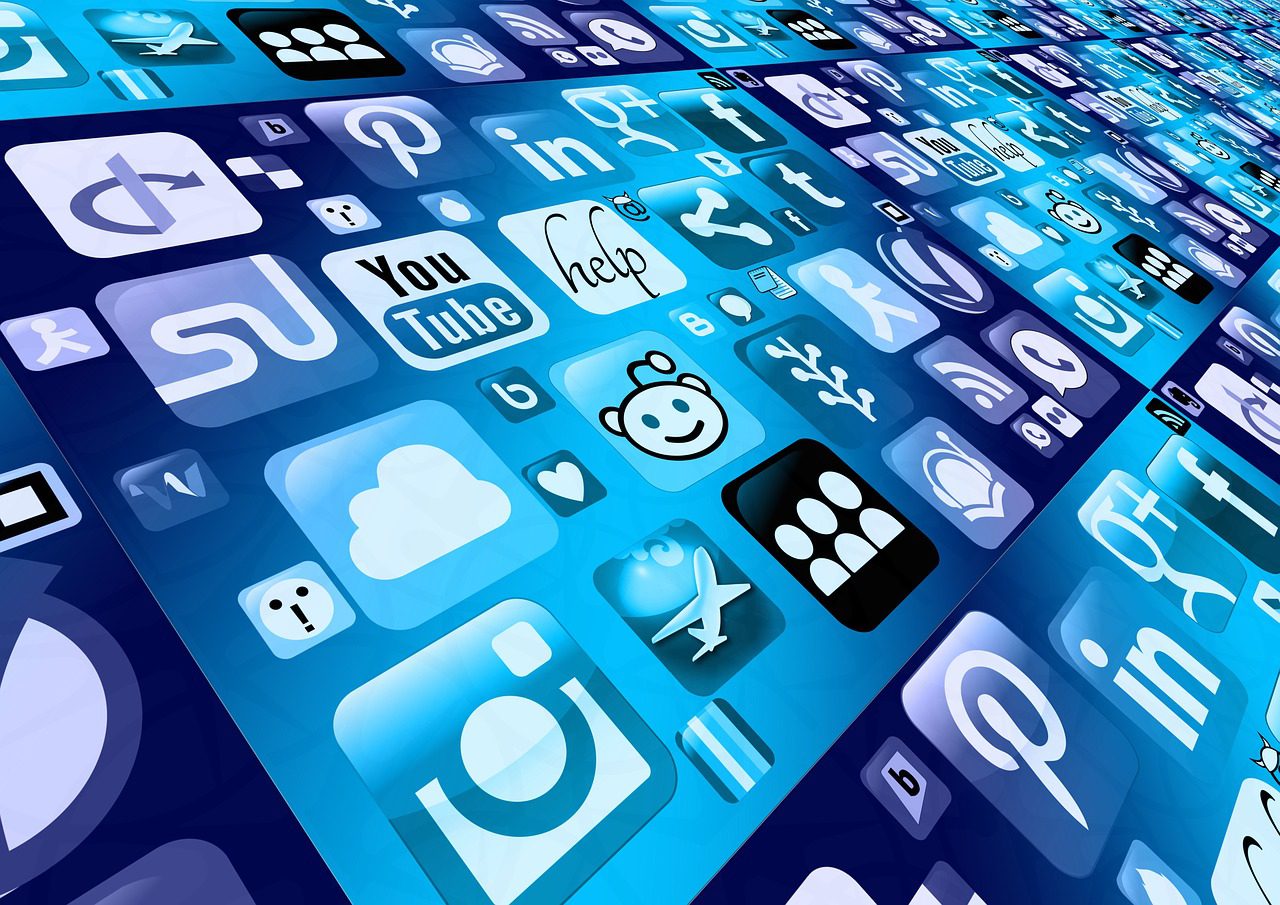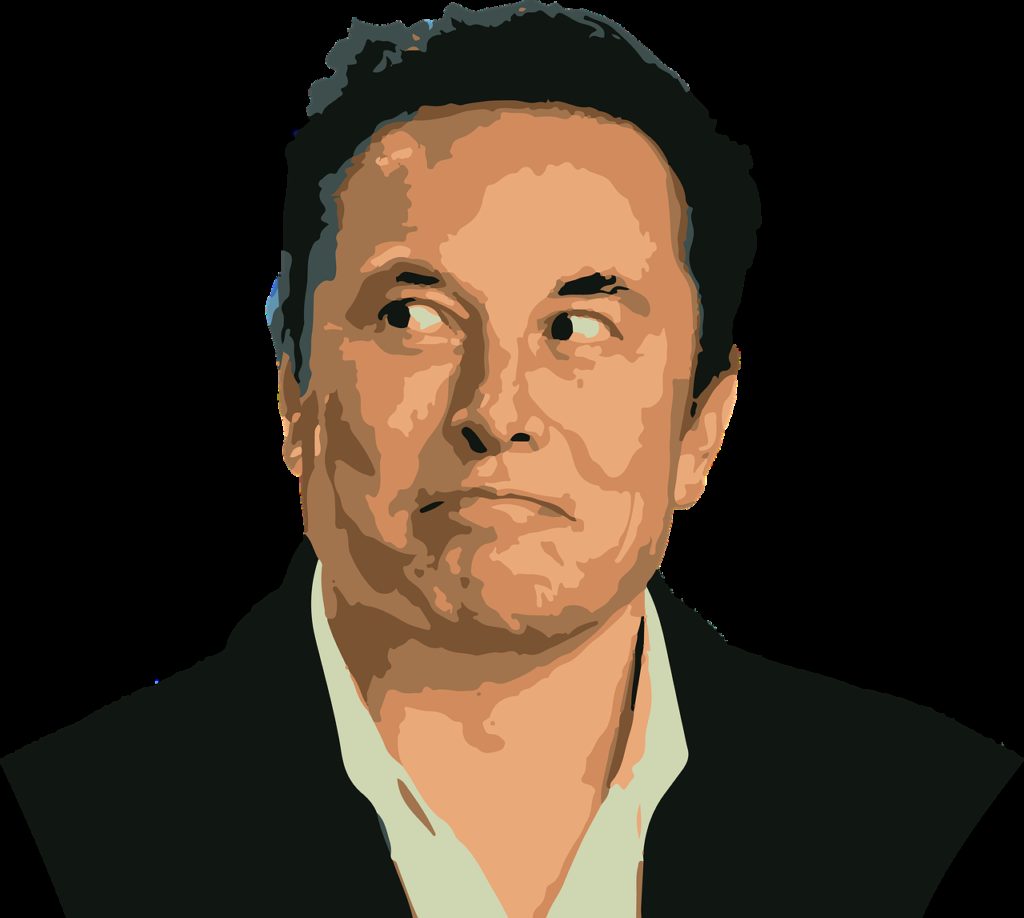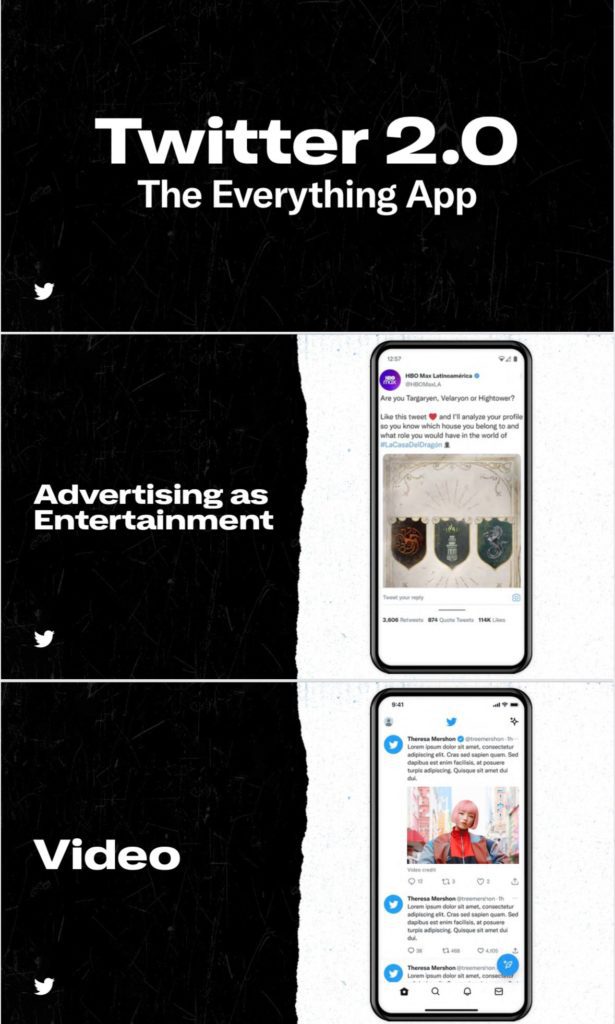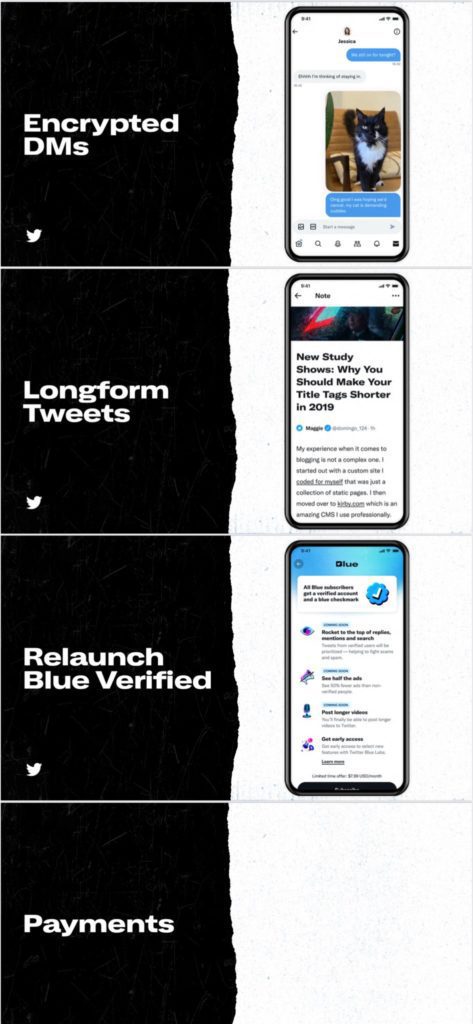
Twitter’s Problems Are Larger Than They Appear
Introduction
This is the third version of this article that I have written. Actually, it isn’t exactly the third version. Why? Well, the first two versions were going to be more about the latest topics and problems of the platform. That was going to be more trivial and current topic(s) focused, with a lot more room to have fun with things like Elon being butt hurt over Trent Reznor leaving the platform, or the weirdness of running a poll to decide if Former President Trump should be reinstated, only to have Trump not come back.
And certainly there is a lot of fodder there for comical takes of all sorts. In fact, if you want to keep track of them, I would recommend reading Twitter Is Going Great as they are tracking as many of the stories as possible.
Instead I want to look at the bigger picture. There is a reality of Twitter that not a lot of people are paying attention to, and it really makes the problems that Twitter is facing even worse than anyone was lead to believe. And no, it’s not the bots that Elon was concerned about before he bought Twitter.
Twitter’s Problem
Twitter is a failure. It was a failure long before Elon started surreptitiously buying up it’s stock. It is widely known that it has almost never been a profitable company (there might be one or two years in which it was profitable, but those were fleeting moments in the history of the social media site). But even the lack of profitability isn’t the basis of it’s failure in my belief.
It’s failure comes down to three factors: (1) the size of the platform, (2) the demographics of the platform, and (3) markets / regions.
Let’s talk about the size of the platform. For all appearances, Twitter has to be one of the largest platforms on the Internet, right? I mean users on the website have successfully had campaigns to do things like have Sonic The Hedgehog completely re-designed before the movie was released. They ran a campaign for literally years to get Zack Snyder’s version of The Justice League released (which upon later examination has become something of a twisted story). And through one of the biggest troll pranks in the entertainment industry history, they managed to convince Sony to re-release the movie Morbius in theaters.
And television news networks have even done things like tracking sentiment on Twitter during elections, or citing “trending” tweets about specific stories. In fact the media seem to be all-on on using Twitter as both a source and reaction medium.
But this incredibly large influence in current culture is at odds with the fact that Twitter, to this day, is only the 16th largest social media site on the Internet. The real behemoth sites in this area are Facebook, YouTube, Instagram, WhatsApp, TikTok. But even Pinterest, Reddit, and Snapchat are larger than Twitter.
Then there is the issue of demographics. The joke has been that Facebook is for old people, and it’s 2.9 billion users are definitely a reflection of the fact that it has user base that is older. But the fact is, many of those older users were once younger users. And those younger users have stuck with the site as they have gotten older. Similar information can likely be seen for sites like YouTube, which serve content to people from all demographic groups.
Twitter, on the other hand, doesn’t have nearly as broad of an appeal. The breakdown is (approximately): %28 in the 35-49 (~99M) age bracket, %27 in the 25-34 (~95M) age bracket and %25 in the 18-24 (88M) age bracket. For advertisers this is really not all that good of a breakdown. The most likely group to have disposable income is the 18-24 group, but they are the smallest of the three, representing only about a quarter of the user base. For the other groups, they are going to be more niche groups to market to, they are the groups that are likely to be moving into homes, starting familiars or focusing on their careers.
But, that’s the more North American-centric advertising market. What about the other markets? Well, for Twitter, there aren’t too many markets. Besides the United States, Twitter’s biggest presence is in Japan. And boy howdy, that is a completely different market that I can’t even begin to explain, much less understand.
Beyond these regions, Twitter barely scrapes into other regions. India, the United Kingdom, Brazil, Turkey, Indonesia are the next five biggest countries / regions. All of them have less than 20 Million users each.
So, this covers the biggest factors that are problematic for Twitter. There’s an out-sized influence in some markets, there’s a skew of demographics that can make it difficult for advertisers (who, surprisingly were spending as much money on Twitter as they do on YouTube), and there is the less than stellar penetration into most regions of the world.
These are obvious indicators of one of two things: either (a) stay away from this company. Investing in it is not necessarily a bad idea, but taking an ownership stake is not all that good of an idea, or (b) go through all of this information with an even finer comb, and come up with a plan that will make it into an even more appealing platform. Those are the two best options, but there seems to be another option too…
Enter Elon Musk
So, Elon Musk decided that he would try to do a hostile takeover of Twitter in early 2022. This first came to light when he was surreptitiously purchasing a lot of Twitter stock. But I am not going to got into great deal about how we got here, you can look up the whole story as it was covered in the press, and especially from several Lawyers on YouTube that went through all of the court filings that occurred around the purchase.
The fact was that he whole thing was a circus, much in the way Elon tends to do a lot of things. I do think at one point he was genuinely trying to get out of the purchase, but by that point it was too late and he had to complete the purchase in order to avoid a court battle.
So, when he entered Twitter HQ on October 26th carrying a sink, it was largely thought that he was a person who had a plan for the company. He had been going over the financials and a lot of other information about the company for months, more information than was available to the public… So certainly he was going to take the reins and start working towards a specific vision for the company, right?
Welcome to the Real Circus
Elon’s first move was not a surprise. One of the things that he had stated from the beginning was that he was going to take the company private and manage it in his way. So, firing the board and naming himself as the sole director on October 31st was something that was inevitable. And within the next week he started firing employees…literally firing half of the employees.
Now, as much of a circus environment this created to all outward appearances, this isn’t actually an unprecedented move. Firing a bunch of employees to free up capitol during a takeover is something that happens quite often. However, the way this was handled was an indicator of just how poorly planned this takeover was.
Typically in a company where mass layoffs are planned, there is a period of review. An analysis of the work of each employee, and a determination of the consequences for eliminating the employee. And, more importantly, determining how any gaps can be filled by the remaining employees. But this was obviously not how things were planned out in this case as it has been widely reported that customers that had representatives in the advertising department no longer had a contact. The communications depart for the company was completely let go – meaning that no one from the press was able to get feedback on any of their stories.
Then there were the advertisers. Upon hearing about the circus Elon had started within the company, many of the decided to pause their advertising on Twitter, And as things haven’t gotten better more advertisers have pulled out. (I won’t bother to repeat the lunacy of the statements Elon has made on this matter.)
Then there was the ultimate Sword of Damocles being held over the company’s head when he stated publicly in an interview that it was still possible that Twitter might have to go through bankruptcy.
Overall, it just wasn’t a good start to Elon’s coming into the company and changing it’s direction and focus.
Where is Twitter Going?

Remember near the beginning of this article that I outlined the real nature of the problem that Twitter is facing: it has an out-sized influence in some countries, but an extremely low adoption throughout the rest of the world. It’s demographics don’t span age groups all that well. And, of course, the company has been bleeding money for years.
So, what actions has Elon taken so far:
- Cut (more) than half of the staff.
- In the process he instituted weekly code reviews, with the possibility of employees losing their job or being put on notice.
- He instituted a paid verification plan, which immediately lead to impersonation accounts that caused real-world damage to several companies.
- At which point he cancelled the program, stating that it would be restarted when the company had a better verification process in place. No one is certain how he is going to do that since he cut %80 of the contractors that did this type of work.
- He re-instated several highly controversial accounts, and then a few days later offered “general amnesty” to other accounts that had been previously banned, but hadn’t “broken the law”.
- Disabled %80 of the micro services used in the back end of the system.
- Numerous issues have been reported since then, but details of which issues are specifically related to this event are unknown.
- Made several other proclamations… But we’ll talk about those below.
Out of these five actions, only one of them can be directly seen as addressing any of these problems: paid verification. But, there were issues with that beyond the fact that it blew up in the company’s face. Estimates have been made as to how much money the new verification system was likely to make. If all of the 400K currently verified users signed up for new verification mark, Twitter would have only made around $38 Million (according to The Verge). And that doesn’t account for the overhead of handling the verification in the first, which would significantly reduce the profit. And it wouldn’t come anywhere near making a dent in the $1 Billion in interest payments Twitter owes yearly.
Note that the one thing that none of these actions did that could have been a major positive: do something to prove to advertisers that Twitter was still a stable platform. If anything, these actions proved just the opposite. Companies don’t want to advertise on a platform where there is no one to contact regarding their plans. They don’t want to advertise someplace where sudden changes in the code / infrastructure could disrupt or affect their ads. And they really don’t want to advertise on a platform where they may be associated with people that are known for things like antisemitism, racism, sexism, misogyny, or worse.
While I did say that reducing the staff is a cost-cutting measure, it’s not significant enough to offset any of the debt either. By my personal estimate, it was likely around $250M. But that doesn’t add an profit and give the company any funds to work with. It just slows the rate of spending. But in the mean time, it has done far greater damage to the company as many of the people who have the long-term institutional knowledge are no longer around to help with the transition plans that Elon may have, if any.
That would bring us to the last item on the list: the proclamations. So, let’s talk about them…
Okay… What’s The Actual Plan?
So there have been several proclamations that Elon has made with regards to his plans to create “Twitter 2.0” which he has dubbed “The Everything App”. This is a throwback to his X.com days — an application which largely failed, and was bought out by the company that would eventually become PayPal. Let’s go through Elon’s current plans one at a time.
Verification / Blue

Yup, this plan isn’t gone yet, the first failure was just a bump in the road, as far as Elon was concerned. In fact, if anything, he has started to double down on this plan. He wasn’t to have multiple badges to indicate people who are celebrities, politicians, or company reps. And, on top of this he plans to add labels to the profiles to clarify why the user has this type of badge. IE, someone is an actor, musician, model, journalists, media, etc.
The problem with this system is that (a) doing true verification of each person that applies is going to require that they provide personal information, and won’t have any knowledge of how that information is being handled, and (b) the cost of doing such verification is likely to be equal to, or greater than the original $8 USD.
But, that’s just the surface of the issues with this concept. The real problem is what it will do to the culture that Twitter has had over the past decade. By introducing this system Elon is indicating that the users of Twitter are now being split into castes. And those castes will have different treatment. Some of the castes will show up on the verified tab of the site. And these castes will be given priority in timelines and search results.
This will de-value the users that are unable to go through such a verification. For example, users that are whistle blowing on corruption within a corporation. Or activists that are working to expose corruption, abuse, or other issues within their government. Or how about the people that are part of the LGBTQ+ movement that are in vulnerable positions and cannot go through verification without fear of being doxxed?
Encrypted Direct Messages
On the surface this sounds like a great idea. However, this is something that the company has been trying to do for years. The problem they have run into is that the systems they have looked at have had the requirement of using personally identifiable information for generating the keys necessary to encrypt the messages.
But other applications do it, right? Yes they do, but they are often either using weak encryption, or they have been built from the ground up to handle this kind of information in a way that is less vulnerable than a system like Twitter. Maybe it can be done, maybe it can’t. I personally don’t think that with Twitter’s security breach track record it would be a good idea to trust them. (It’s only recently come to light that a security breach a few years ago was much larger than was originally reported.)
Some other considerations: the US only allows fairly weak encryption technologies to be exported to other countries. This means that either (a) there will be two different types of encryption, one for use within then US, and another for user with other countries, or (b) that only weak encryption will be used.
And a final point, even if this is implemented, don’t believe for a second that there won’t be government organizations that insist they be able to get access to unencrypted copies of the information from direct messages. It is not very likely that the messages will truly be end-to-end encrypted.
And, I suspect that this will be tied into the verification service, and will likely be an additional charge along with the verification. I don’t have any specific knowledge of this, but it’s just a hunch. And if that’s the case, it will be totally useless for the cases in which it is most needed (as mentioned above with the verification system).
Long Form Tweets
Whatever this is. The question is why? This doesn’t actually serve any real purpose that I can think of. Twitter has always prized itself on being the short content system. It’s the place to have higher interaction between users. The short content has driven the concept that the information is discrete and specific. Each tweet is designed with some thought to get an exact point across.
Now, I can say that expanding the limit to something like 500 characters, like Mastodon, would not be a bad idea. This would allow people to be a bit more precise with getting their points across, without forcing users to condense things in a manner that is easily misunderstood.
The one screen shot we’ve seen of this concept so far showed a news article in “long form”. But that doesn’t seem to be a likely candidate for the use of long form tweets, IMO. News organizations have been pretty vocal about using these systems to drive traffic to their websites where they can try to recover at least some of their operating costs through advertising or selling subscriptions to their publications. They have already gone through battles with both Facebook and Google over the idea of having their content syndicated in the past. They are pretty entrenched in their ways, and this isn’t likely to change any time soon.
Advertising as “Entertainment”

I think this is meant to be just another name for in-line advertising. They idea that the ads look like the tweets that you are already reading. Of course there are problems with this… First is the obvious one: this is how Twitter’s advertising works for the most part already.
Second is that there are regulations around how ads can be presented in many countries. Japan seems to have some of the most creative advertising, but that is largely based on their social and cultural norms. Those norms are different from the rest of the world where most people find ads of any form to mostly be annoying.
I personally don’t see this going anywhere. I suspect it’s just a bone he put out there to try to get many of the big corporations that pulled out of advertising on Twitter to come back.
Video
This is already part of Twitter. People upload short videos to the site already. Longer form videos aren’t likely going to work with Twitter. Besides, there is plenty of competition in the video space now: YouTube, Lbry, TikTok, InstaGram, Facebook, and others.
The other thing about this is that Twitter has a track record in this area. They had Vine, a predecessor to TikTok that was largely loved before it was retracted. But now, between YouTube and TikTok paying creators to make content for their platforms there isn’t much of a space for Twitter to come in.
Payments
If you weren’t convinced when I said that Elon was trying to go back to his X.com days before, this should settle the matter. The idea that Elon has stated is that he wants people to be able to transfer money and cryptocurrency between each other.
First question: hasn’t Elon learned from the very short-lived Bitcoin experiment that he did with Tesla in 2021? In February of 2021 he purchased $1.5 Billion in bitcoin, but in May of that year stopped accepting the coin citing the damage that it was doing to the environment. Honestly the only thing that has changed since then is that there are more scams in the Cryptocurrency market being exposed on a daily basis, we’ve seen whole companies and exchanges collapse (here’s looking to the latest, FTX), and the cryptocurrency market is more unstable than ever.
Also, Musk has been sued over manipulating the Cryptocurrency market in the past.
Second: does Elon even understand the kind of regulation that getting into the money transfer business is going to entail? When he was originally working on X.com, the internet was the wild west. The regulators weren’t ready for the rise of a site like PayPal, but they learned quickly. And now the whole system is at least as regulated as the banking system, if not more.
If Elon doesn’t like deal with the FTC and SEC now, imagine how much more complicated things are going to be getting into this business.
Video / Audio Chat
Something else that Elon floated on Twitter, but wasn’t in his recent slide presentation was having Audio and/or Video direct messages. This actually seems like something that wouldn’t be a bad idea. It’s currently possible to post voice-memos, or videos as regular tweets. And there are Twitter Spaces for group voice chats. Extending these abilities to the Direct Messaging portion of Twitter, especially if they are encrypted as is planned for Direct Messages already.
However, this wouldn’t be much of an innovation overall. Other social sites like Facebook and SnapChat have had these kinds of features for some time. On the other hand, there is space to innovate in this area, but the way this was thrown out there as an off-hand remark leads me to believe that Elon hasn’t considered that possibility.
Reconciling The Problems vs. The Proposals
That’s it for all of the known and speculated plans. But now comes the point at which things need to be reconciled. If we take these plans, and look at the current issues that Twitter is facing, which (if any) of these plans could actually dig them out of running in the red? Do any of these help to actually bring twitter to a place where there is a bigger acceptance of it in the markets? How do these plans address the issue of demographics?
Markets / Regions
Let’s start with market penetration. None of these features will have an effect on market penetration. In fact, just adding features to Twitter is the wrong approach in this area. In fact, Elon seems to be under the impression that Twitter is just about “software and servers”. And in that he is completely missing what Twitter is about: it’s a communications platform that supposedly brings communities together.
And, in fact, Elon has even said as much: he’s said that Twitter is the town square. And that he wanted “free speech” (under his definition of free speech) to be the main point of Twitter. However, these plans don’t make one feel that this the case.
There was one thing that he has done that might go towards this goal… He claimed that disabling %80 of the microservices would make the app faster in many regions. That claim hasn’t been verified or dis-proven. However, by itself, performance improvements does not equate to increased acceptance. There are a lot of other factors that effect application acceptance.
For example, local governments may have requirements for applications in some regions. This is something that has been documented in the dealings of Facebook and Google. Often the requirements of some countries runs very counter to the goal of allowing freedom of speech. And it can actually increase the amount resources needed for things like security and moderation — both of which Elon seems to have done a great job of cutting.
Demographics
Demographics are important in a network like Twitter. The demographics need to support a couple of objectives: provide monetizable traffic (which Twitter refers to as mDAU’s – monetizble Daily Active Users), and users who are willing and able to actively spend money on products / services. While Twitter captures a large portion of the demographics in the ages 18-49, they are missing the final group: users over 50.
Currently Twitter’s mDAU numbers are low compared to other social media sites like Facebook and YouTube. The problem is, it isn’t likely that they are actually going to increase their mDAU numbers without becoming more of a presence in other regions / markets. The other thing that would help would be to increase the mDAU through bringing in more 50+ year old users, which doesn’t appear to be reflected in any of the announced plans.
The one plan that could directly appeal to advertisers is his “Advertising as Entertainment”. However this doesn’t sound like it’s a plan for advertisers. Instead it sounds like it’s a plan to attempt to keep Twitter’s user based from being annoyed with increased ad traffic. I don’t see how this is going to work. Sure advertising during the Super Bowl is seen by many as entertainment, but that is a special event, and advertisers spend massive amounts of money creating those advertisements to stand out in a very crowded field. This isn’t the kind of thing they are going to do specifically for Twitter…if they even want to advertise on Twitter anymore.
When we consider that approximately half of the advertisers have left Twitter due to the instability that has ensued since Elon has taken over, it’s difficult to see how this source of funding will be recovered. My suspicion is that advertisers will find their funding is better used on other sites that have a larger demographic that is monetizable.
Outsized Influence
Twitter has, in the past, found itself in the unique position of being very influential. Or, at least, it appears to be influential… Until you look closer. Yes, there have been things like the “Release the Snyder Cut” campaign for the Justice League movie, and reaction to the backlash for the design of Sonic The Hedgehog that caused the studio to delay the film’s release so they could redesign the character and re-composite the film.
But, those cases are outliers, as discovered by Matthew Patrick in his Film Theory video “Twitter’s Toxic Relationship With Movies“. The fact is that Twitter often gets things wrong, or completely ignores things in some cases. Why? This goes back tot he demographics. The movies that appeal to a broad audience aren’t often advertised or even talked about on Twitter, like the upcoming Avatar 2. And in the case of the most popular TV show in the United States, it doesn’t even get mentioned much less trend on Twitter. Why? It’s main demographic is people in the 50+ range.
The other place that Twitter has traditionally had a major influence is in the news media. Many journalists have used Twitter as a starting place for finding new stories to report on. And many publications and news networks have sourced material from Twitter. Heck, at one point some of the news networks were using Twitter as a form of real-time polling for elections, or as a Q&A system for live broadcasts during the pandemic.
But a lot of that is changing now. We’ve already seen CBS news enact a temporary suspension of their activity on Twitter in order to re-evaluate their relationship with the platform. (The did return a few days later, however this was the first time that any news network made a formal, public announcement that they were reconsidering their relationship with a platform.)
And, in the wake of Elon’s takeover thousands of journalists have left the platform. Many of them moved to other platforms like Mastodon and Post News.
And Elon’s proposal that would address this? Long Form Tweets. In the mockup for this feature it features what appears to be a news story from a publication. The problem with this is that it is exactly the opposite of what the majority of the media wants. They want to drive readers to their sites in order to either (a) sell a subscription, or (b) build up their own mDAU numbers for advertisers. As mentioned above, many media organizations already went through these battles with Facebook and Google. Twitter doesn’t have that much influence. And, even if Twitter managed to find a way to leverage that kind of influence, it still isn’t likely to solve the other issues that Twitter is facing (market penetration, and demographics issues).
Conclusion
So, that’s the state of things. The situation as I can judge it is not looking very good for Twitter, and that’s before digging into things like the technical issues (Chris Titus’s video “Will Twitter Infrastructure Go Down?” is very informative on this topic). the implications of his un-banning literally thousands of accounts, and numerous other public decisions that he’s been posting. The current needs that Twitter has are not going to be addressed by the features that Elon has put forward.
Honestly, I think there are things that he should focus on:
- Fixing and solidifying the infrastructure. There’s a lot of work that needs to be done there, and it’s likely to be a long term project to do the clean up (my guesstimate is that with enough top-tier engineers this will take around a year to accomplish).
- Cancel the idea of Blue Verification. It’s a bad plan that is likely to do a lot of damage to the social aspects of Twitter.
- Take the ideas for new features and work on directly monetizing them as “value added” extensions. This would be similar to Discord’s Nitro subscriptions which add new features to the server.
- Maybe have two different or three different groups of packages for: general users, organizations, and businesses.
- General users might add things like threaded tweets and custom emojis for reactions.
- Organizations might add things like general users package, plus group accounts that are only visible to users added to an access list for that account, and expanded Twitter spaces…maybe even video group calls.
- Business users like the Org users, but with some other additional features.
- Some other features could be general add-ons that aren’t targeted at organizations, like voice and video chatting in DM’s.
- Another thing that might be a possible add-on would be publication subscriptions. IE, work with a bunch of the media to make their content available via special accounts on Twitter, but only users that pay can view the account. The subscription would, of course, include a cut for Twitter.
These are just a few of the ideas that come to my mind. They are things that I would investigate, take some time to do some research on. I suspect some of them might not be worth doing, but some of them would have a good chance of generating some real income,





